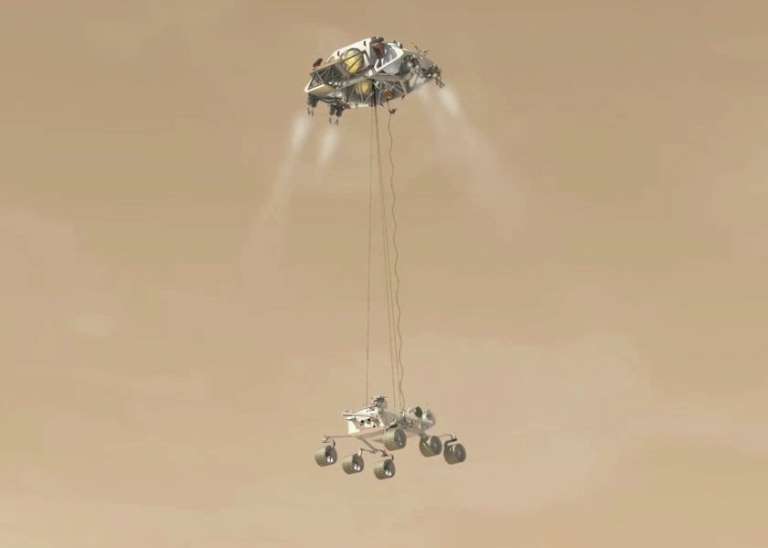Emily Lakdawalla • May 18, 2011
It's opposite day at the Curiosity landing site selection meeting
I've been attending the final Mars Science Laboratory Landing Site Community Workshop meeting this week, taking copious notes for a future article in The Planetary Report, some of which I'll post here when I get a chance. But I just had to write a brief post about the totally crazy role reversal that is going on at this meeting. Time and time again, scientists are expressing concern about possible hazards to the rover at different sites, and time and time again, engineers are telling them not to worry, the rover can handle pretty much anything they'd encounter.
This is completely opposite to the norm. Traditionally, scientists and engineers are philosophically pitted against each other. It's the job of scientists to find cool stuff for their spacecraft to study, and they can be notoriously insensitve to hazards they might encounter along the way. It's the job of the engineers to preserve the spacecraft so that it can survive to operate another day. So it's usually the scientists who are trying to push the spacecraft, and it's the engineers who are trying to put the brakes on their enthusiasm.

At this meeting, where we're trying to evaluate the relative merits of four possible landing sites, these roles are reversed. For example, at the end of the first day, Steve Ruff stood up and made a strong case that since the landing site at Mawrth has high-priority science targets within the landing ellipse, while the other three sites do not, why are we even considering sending the rover to a site where you'd have to drive some distance to get science? Doesn't that impose risk on the mission, since something unforeseen could kill the rover any day? (He described this as a "sniper mentality") The reply from the engineers was: this rover can do what you need it to do to get to the good science stuff. Today, some engineers showed videos of test landings. One of them involved the rover landing on a 15-degree rocky slope with a 40-centimeter rock under the upslope middle wheel and a 40-centimeter sandy trench under one of the downslope wheels. He apologized for how "boring" the simulated landing was, while the scientists in the room emitted a collective gasp at the grinding and clanking sounds of the rover coming to rest on its wheels. (I'll agree that the sound was a bit alarming, but I have to say that the rover didn't slide an inch on landing -- once those wheels were on the ground, they were rock solid.)
Why this role reversal? I think there are a couple of reasons. One is that the scientists are here as skeptics -- they are here to poke holes in the arguments that each of the landing sites is a good one. But the engineers have to design the rover to land at any of these sites.
Another reason is that the engineers are swimming in data, which is giving them much more confidence than usual that their analyses have captured all the possible landing failure scenarios. Past landings depended upon models of the amount of dust or rocks or steep slopes might be encountered upon touchdown. This time, though, the HiRISE camera has provided incredibly detailed digital elevation models and maps pinpointing every rock larger than a meter across, across the entire landing ellipse. So the engineers can take their simulations of the rover's mechanical capability (which are very, very accurate) and simulate landings on the actual terrain. When they do that, here is what they get for their predictions of successful landings at each of the four sites, assuming that all the parts of the spacecraft work as they are designed to work:
Eberswalde: 99.36%
Gale: 99.79%
Mawrth: 99.79%
Holden 99.86%
Summarizing this, Devin Kipp said, "We've built a landing system that's capable of landing on Mars and it doesn't matter where on Mars we land with it." Although this is a bit of an exaggeration, it expresses the engineers' level of confidence in the robustness of the machine they've built. Furthermore, Matt Golombek summarized the engineers' analysis of the traversibility of the landing sites thusly: "We can land in any of these places, and we can drive anywhere we want to in any of these places."
Support our core enterprises
Your support powers our mission to explore worlds, find life, and defend Earth. You make all the difference when you make a gift. Give today!
Donate

 Explore Worlds
Explore Worlds Find Life
Find Life Defend Earth
Defend Earth

